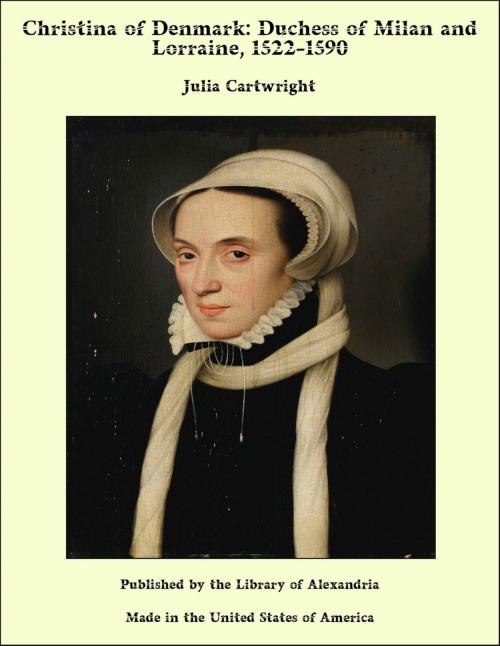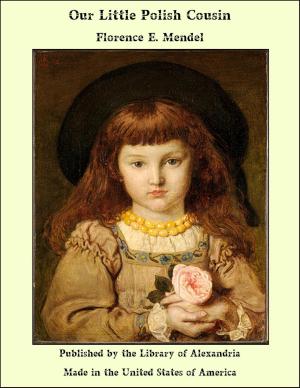Christina of Denmark: Duchess of Milan and Lorraine, 1522-1590
Nonfiction, Religion & Spirituality, New Age, History, Fiction & Literature| Author: | Julia Cartwright | ISBN: | 9781465619587 |
| Publisher: | Library of Alexandria | Publication: | March 8, 2015 |
| Imprint: | Language: | English |
| Author: | Julia Cartwright |
| ISBN: | 9781465619587 |
| Publisher: | Library of Alexandria |
| Publication: | March 8, 2015 |
| Imprint: | |
| Language: | English |
The 19th of July, 1507, was a memorable day in the history of Malines. A solemn requiem Mass was sung that morning in the ancient church of S. Rombaut for the soul of Philip, King of Castille and Archduke of Austria, and, by right of his mother, Duke of Burgundy and Count of Flanders and Brabant. The news of this young monarch's sudden death at Burgos had spread consternation throughout the Netherlands, where the handsome, free-handed Prince was very popular with the subjects who enjoyed peace and prosperity under his rule. "Never," wrote a contemporary chronicler, "was there such lamentation made for any King, Duke, or Count, as for our good King Philip. There was no church or monastery in the whole land where solemn Masses were not said for the repose of his soul, and the mourning was greatest in the city of Antwerp, where all the people assembled for the yearly Fair wept over this noble young Prince who had died at the age of twenty-eight."[1] The King's corpse was laid in the dark vaults of Miraflores, where his widow, the unhappy Queen Juana, kept watch by her husband's grave night and day; while, in obedience to his last wishes, his heart was brought to the Netherlands and buried in his mother's tomb at Bruges. Now the States-General and nobles were summoned by Margaret of Austria, the newly-proclaimed Governess of the Netherlands, to attend her brother's funeral at Malines. From the gates of the Keyserhof, through the narrow streets of the old Flemish city, the long procession wound its way: Knights of the Golden Fleece, nobles, deputies, Bishops and clergy, merchants, artisans, and beggars, all clad in deep mourning. Twelve heralds, followed by a crowd of gentlemen with lighted torches, bore the armour and banners of the dead King to the portals of S. Rombaut. There an immense catafalque, draped with cloth of gold and blazing with wax lights, had been erected in the centre of the nave. Three golden crowns, symbols of the three realms over which Philip held sway, hung from the vault, and the glittering array of gold and silver images on the high-altar stood out against the sable draperies on the walls. A funeral oration was pronounced by the late King's confessor, the Bishop of Arras chanted the requiem Mass, and when the last blessing had been given, Golden Fleece threw his staff on the floor, crying: "The King is dead!" At the sound of these thrice-repeated words the heralds lowered their banners to the ground, and there was a moment of profound silence, only broken by the sound of weeping. Then Golden Fleece cried in a ringing voice: "Charles, Archduke of Austria!" and all eyes were turned to the fair, slender boy, who, robed in a long black mantle, knelt alone before the altar. "My lord lives! long may he live!" cried the King-at-Arms; and a great shout went up on all sides: "Long live Charles, Archduke of Austria and Prince of Castille!" A sword blessed by the Bishop of Arras was placed in the boy's hands, and the heralds of Burgundy, Flanders, Holland, and Friesland, raising their fallen pennons, each in turn proclaimed the titles of the youthful Prince, who was to be known to the world as Charles V.
The 19th of July, 1507, was a memorable day in the history of Malines. A solemn requiem Mass was sung that morning in the ancient church of S. Rombaut for the soul of Philip, King of Castille and Archduke of Austria, and, by right of his mother, Duke of Burgundy and Count of Flanders and Brabant. The news of this young monarch's sudden death at Burgos had spread consternation throughout the Netherlands, where the handsome, free-handed Prince was very popular with the subjects who enjoyed peace and prosperity under his rule. "Never," wrote a contemporary chronicler, "was there such lamentation made for any King, Duke, or Count, as for our good King Philip. There was no church or monastery in the whole land where solemn Masses were not said for the repose of his soul, and the mourning was greatest in the city of Antwerp, where all the people assembled for the yearly Fair wept over this noble young Prince who had died at the age of twenty-eight."[1] The King's corpse was laid in the dark vaults of Miraflores, where his widow, the unhappy Queen Juana, kept watch by her husband's grave night and day; while, in obedience to his last wishes, his heart was brought to the Netherlands and buried in his mother's tomb at Bruges. Now the States-General and nobles were summoned by Margaret of Austria, the newly-proclaimed Governess of the Netherlands, to attend her brother's funeral at Malines. From the gates of the Keyserhof, through the narrow streets of the old Flemish city, the long procession wound its way: Knights of the Golden Fleece, nobles, deputies, Bishops and clergy, merchants, artisans, and beggars, all clad in deep mourning. Twelve heralds, followed by a crowd of gentlemen with lighted torches, bore the armour and banners of the dead King to the portals of S. Rombaut. There an immense catafalque, draped with cloth of gold and blazing with wax lights, had been erected in the centre of the nave. Three golden crowns, symbols of the three realms over which Philip held sway, hung from the vault, and the glittering array of gold and silver images on the high-altar stood out against the sable draperies on the walls. A funeral oration was pronounced by the late King's confessor, the Bishop of Arras chanted the requiem Mass, and when the last blessing had been given, Golden Fleece threw his staff on the floor, crying: "The King is dead!" At the sound of these thrice-repeated words the heralds lowered their banners to the ground, and there was a moment of profound silence, only broken by the sound of weeping. Then Golden Fleece cried in a ringing voice: "Charles, Archduke of Austria!" and all eyes were turned to the fair, slender boy, who, robed in a long black mantle, knelt alone before the altar. "My lord lives! long may he live!" cried the King-at-Arms; and a great shout went up on all sides: "Long live Charles, Archduke of Austria and Prince of Castille!" A sword blessed by the Bishop of Arras was placed in the boy's hands, and the heralds of Burgundy, Flanders, Holland, and Friesland, raising their fallen pennons, each in turn proclaimed the titles of the youthful Prince, who was to be known to the world as Charles V.















